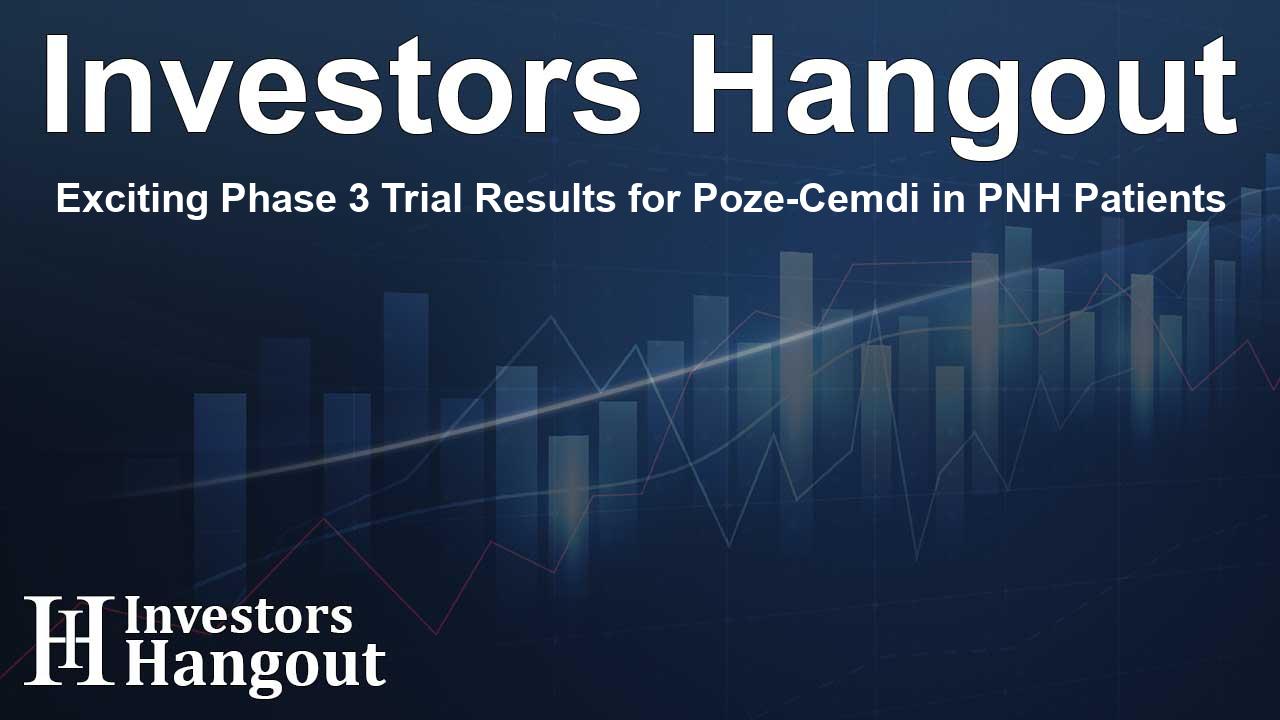Exciting Phase 3 Trial Results for Poze-Cemdi in PNH Patients

Impressive Results from the Latest Phase 3 Trial
Recent findings from a Phase 3 exploratory trial have unveiled a promising combination treatment of pozelimab and cemdisiran, referred to as poze-cemdi. This innovative solution exhibited remarkable efficacy in managing intravascular hemolysis associated with paroxysmal nocturnal hemoglobinuria (PNH), outperforming the standard treatment of ravulizumab.
The Clinical Breakthrough
The ACCESS-1 trial presented its findings at a renowned hematology meeting, showcasing the superior performance of poze-cemdi. This pioneering trial involved patients who were naïve to previous complement inhibition treatments. The primary focus was to assess the reduction of lactate dehydrogenase (LDH) levels over 26 weeks, a standard measure for evaluating hemolysis control.
Comparison of Control Levels
In a direct comparison, poze-cemdi demonstrated far greater success in controlling LDH levels. While treatment with ravulizumab resulted in only one patient achieving adequate control, four out of five patients switched to poze-cemdi achieved desirable LDH control, indicating a substantial therapeutic advance.
Understanding PNH and Its Challenges
Paroxysmal nocturnal hemoglobinuria is a rare blood disorder characterized by the destruction of red blood cells. This condition leads to severe complications such as fatigue and thrombosis due to the unchecked activity of the complement system. Effective management of hemolysis is critical for improving patient quality of life and reducing risks associated with this condition.
The Mechanism of Action
Poze-cemdi represents a dual approach in targeting the complement pathway. Pozelimab, a monoclonal antibody, directly inhibits complement factor 5 (C5), while cemdisiran works at the RNA level to lower levels of C5. This combined mechanism allows for thorough and sustained inhibition of terminal complement activity, significantly enhancing treatment efficacy.
Key Findings of the Trial
The ACCESS-1 trial documented that 96% of patients receiving the poze-cemdi therapy achieved adequate LDH control compared to 80% receiving ravulizumab. Furthermore, 93% of those treated with poze-cemdi attained normalization of LDH levels, a stark contrast to the 65% success rate in the control group.
Changes Post-Treatment Switch
Importantly, those patients initially treated with ravulizumab who were switched to poze-cemdi experienced significant improvements. An astonishing 95% of these patients eventually achieved LDH control, including several who had previously struggled with ravulizumab.
Safety Profile of Poze-Cemdi
The trial findings also included an evaluation of the safety and tolerability profile of poze-cemdi. Adverse events were reported in 84% of patients using poze-cemdi, comparable to 87% in those receiving ravulizumab. Most events were mild, with headaches and respiratory infections being the most common.
Looking Ahead: Further Studies
This encouraging data paves the way for continued investigations into poze-cemdi. There is an ongoing registrational cohort testing its effectiveness against eculizumab, which adds another layer to the exploration of this novel treatment.
About Regeneron Pharmaceuticals
Regeneron Pharmaceuticals, Inc. (NASDAQ: REGN) is dedicated to developing cutting-edge therapeutics for serious diseases. With a commitment to pushing the boundaries of science, the company leverages advanced genetic discovery and cutting-edge technology to create innovative treatment options. Their research encompasses a wide range of conditions, emphasizing blood disorders such as PNH, alongside other rare diseases.
Frequently Asked Questions
What is poze-cemdi?
Poze-cemdi is a combination treatment of pozelimab and cemdisiran designed to inhibit C5 in the complement system, providing greater control of hemolysis in PNH patients.
How effective is poze-cemdi compared to ravulizumab?
Clinical trial results indicate that poze-cemdi significantly outperforms ravulizumab in achieving adequate control of LDH levels and overall management of PNH.
What are the side effects associated with poze-cemdi?
The safety profile shows that most side effects are mild and comparable to those seen with other C5 inhibitors, with common issues including headaches and respiratory ailments.
What is Regeneron's role in developing poze-cemdi?
Regeneron Pharmaceuticals is leading the development of poze-cemdi, focusing on bringing innovative treatments for serious disease conditions such as PNH to market.
Where can I find more information about Regeneron?
For further information, you can visit Regeneron's official website or contact their investor relations team.
About The Author
Contact Evelyn Baker privately here. Or send an email with ATTN: Evelyn Baker as the subject to contact@investorshangout.com.
About Investors Hangout
Investors Hangout is a leading online stock forum for financial discussion and learning, offering a wide range of free tools and resources. It draws in traders of all levels, who exchange market knowledge, investigate trading tactics, and keep an eye on industry developments in real time. Featuring financial articles, stock message boards, quotes, charts, company profiles, and live news updates. Through cooperative learning and a wealth of informational resources, it helps users from novices creating their first portfolios to experts honing their techniques. Join Investors Hangout today: https://investorshangout.com/
The content of this article is based on factual, publicly available information and does not represent legal, financial, or investment advice. Investors Hangout does not offer financial advice, and the author is not a licensed financial advisor. Consult a qualified advisor before making any financial or investment decisions based on this article. This article should not be considered advice to purchase, sell, or hold any securities or other investments. If any of the material provided here is inaccurate, please contact us for corrections.
